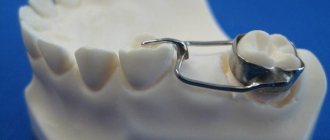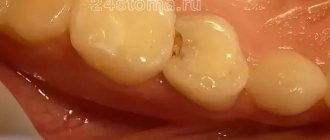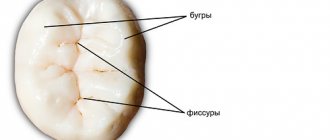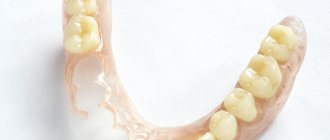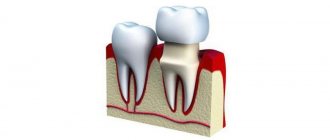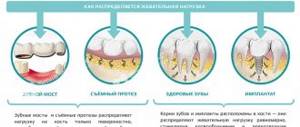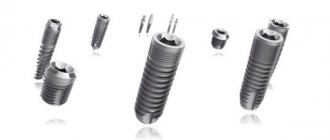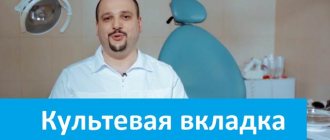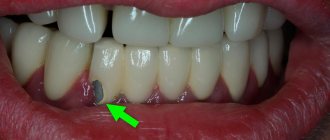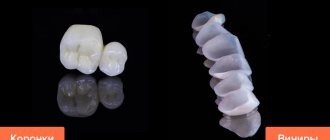Cerec 3 is a modular CAD/CAM system that can flexibly adapt to your requirements
This description of the CEREC system is outdated, SEE NEW!
>> [td]
Prices for the CEREC 3 modular system
"Cerec" is an abbreviation for Chairside Economical Restorations of Esthetic Ceramic, in other words it is a ceramic reconstruction. This machine is used to produce porcelain inlays, crowns, bridges and veneers.
Today, porcelain is considered the best and most harmless material for restoring teeth. This is the best material for fixed prosthetics and microprosthetics. Porcelain in its physical properties is very close to tooth enamel. It does not cause allergic reactions, does not absorb moisture, and does not change color. Porcelain restorations have been successfully used in dental practice for a long time.
Cerec is the most modern technology in the field of prosthetics using all-ceramic masses for the manufacture of crowns and inlays with veneers. With this technology, the doctor models the missing part of the tooth on the monitor screen, based on the obtained boundaries of the defect. After this, the image of the three-dimensional model is fed into a grinding block, which operates in 6 axes and grinds the required structure from the ceramic block. After this, all that remains is to try on and fix the resulting ceramic structure. The entire process takes at most 30 minutes, whereas previously such an operation took several days.
The use of Cerec technology in modern dentistry makes it possible to reduce the time required for prosthetics and dental restoration to a minimum.
CEREC 3 is:
- Greater flexibility for placement in dental offices with different usable areas. You can install the system the way it is convenient for you;
- Flexible integration into the clinic’s production process. You can make an optical impression directly in the patient's mouth or from a model, design and grind the inlay directly on the bench or in the laboratory, in one or more patient visits. CEREC
offers a huge range of options; - Optimal integration of the SIROCAM 3 camera;
- Excellent clinical results and a very simple control system thanks to the new CEREC 3D software;
- Space savings, improved design and more comfortable operation when integrating the SIDEXIS
and
the SIROCAM 3
.
The essence of the method.
The principle of the method is that, using Cerec equipment, the patient is fitted with a ceramic prosthesis (crown, veneer, inlay) made with pinpoint precision within two to three hours. The whole procedure takes place in several stages.
Preparation of the tooth and preparing it for restoration. To do this, the area is treated with a special white powder that does not allow the tooth to glare. A 3D oral camera then takes fixed images of the repaired surface. The resulting image is processed by a computer, resulting in a three-dimensional model of the crown or inlay. This takes into account the bite, the anatomical structure of neighboring teeth, the characteristics of jaw movement, the color of natural enamel and many other very specific nuances. The doctor controls this process from the monitor screen, magnifying the image 12 times.
Once the computer simulation of the Cerec crown is completed, all information is transferred to the grinding unit, where the prosthesis is ground. Two diamond cutters operating in six planes grind the ceramic workpiece with high precision. Within twenty minutes the patient can observe the “birth” of a new tooth. You can learn more about this procedure at a free consultation at a dental clinic.
Adhesive material is used to fix the tab. The high degree of adherence of the veneer to the edge of the tooth leads to the fact that there are practically no connecting seams.
The entire procedure can take up to 3 hours, while standard prosthetics - taking impressions, making a crown in the laboratory by hand and subsequent installation - usually takes 3-4 visits to the dentist.
Cerec technology uses industrial porcelain as a starting material with high levels of uniformity, light reflection and strength. This allows you to create exact analogues of tooth enamel when installing veneers, practically indistinguishable in properties and characteristics. The ceramic material of the crown lends itself well to polishing and giving the desired shade that matches the natural color.
This is interesting! There have been 20,000,000 successful restorations since the introduction of Cerek technology. This indicator is a compelling reason to fully trust patient reviews and count on high efficiency of restoration.
Who is suitable for Cerek crowns?
Prosthetics with Cerec are used both to solve aesthetic problems and to restore dental function:
- unsightly tooth color, darkening or yellowing;
- abnormal shape of teeth, ugly smile;
- gaps between teeth that cause discomfort;
- caries, other diseases and damage to teeth;
- mechanical injuries, cracks, chips;
- damage to the enamel due to natural processes or after removing braces;
- Replacement of old decaying or unsightly fillings.
Cerec technology is one of the safest in the world. It has been used for several decades and has established itself as one of the most reliable ways to restore the aesthetic appearance and health of teeth. After using Cerek, teeth have a natural appearance that lasts for a long time.
But this method, which is both well-tested and modern, has a number of contraindications. All restrictions are associated not so much with the use of this particular type of prosthetics and restoration, but with the general condition of the patient’s body. When visiting a doctor, be sure to inform the specialist about the presence of contraindications: most often they are temporary and Cerec prosthetics will be rescheduled for a more favorable time.
Conditional contraindications for the installation of Cerek veneers:
- acute inflammatory condition: viral or bacterial infection accompanied by fever and other symptoms;
- diseases of the oral cavity;
- exacerbation of chronic diseases;
- blood clotting diseases;
- the presence of cancer or benign neoplasms;
- pregnancy and breastfeeding time.
“
Telo's Beauty is in the top three best dental clinics in Russia according to the Start Smile portal
and
the Kommersant publishing house
Design of the Cerec device.
The Cerec comprehensive dental restoration system consists of three main elements.
A computer that receives and processes data for restoration. Digital modeling allows you to reproduce the line of fragment alignment with absolute accuracy. At the same time, the Cerec system calculates one and a half million options, selecting the optimal data for the crown. The correspondence of the shape and anatomical properties of the veneer leads to complete tightness of the seams and reliable fixation. As a result of the pinpoint precision of digital processing, complete restoration of a damaged tooth is possible. It is noteworthy that it is almost impossible to distinguish a Cerec veneer from “your own.”
Intraoral camera with 3D effect. The introduction of an optical video camera was an innovative event in prosthetic dentistry. The convenient hand-held device has the function of fixing the image at the desired angle. In addition, the camera is designed in such a way as to transmit a three-dimensional model of the crown for processing.
Grinding module for grinding a ceramic crown. Before the restoration begins, a workpiece is installed in the milling unit. Depending on the type of Cerec prosthesis (crown bridge or veneer), the grinding process can take from 10-20 minutes. The fragment is processed with diamond cutters and wetted with water.
This is interesting! The popularity of the Cerec system is estimated at 25,000 - so many dental clinics around the world have installed this innovative technology.
General understanding of technology and CAD/CAM systems
The Cerec (Chairside Economical Restoration Esthetic Ceramic) technology developed at the University of Zurich, registered in 1985, became a catalyst for bringing dental restoration technology to a new level. A distinctive feature of the technique is the option of instant restoration, which reduces all procedures to one visit to the dental office. Ceramic crowns on a Cerec implant are created by processing pre-calibrated blanks.
The basis of the methodology was CAD/CAM technology - a complex system based on the use of digital software. The design of three-dimensional models and the transfer of data to special equipment guarantee accurate and fast processing of prostheses.
Types of ceramic masses.
Depending on the task at hand, various ceramic materials can be selected for Cerec restoration. Based on durability, they are medium, strong and high-strength, and based on their chemical composition they are divided into oxide and silicate.
Zirconium oxide is the strongest material used today in Cerec dentistry. But its peculiarity is low light transmission, which makes this material unsuitable for veneers of anterior teeth. On the other hand, for creating bridges or crowns, zirconium oxide is optimal in all respects.
Feldspar is a natural ceramic whose properties are as close as possible to tooth enamel. Compared to other materials of this type, spar has lower strength and high light transmittance. This positions it for use as Cerec veneers in the anterior group.
Glass ceramics - widely used in the Cerec prosthetic system. The material is very durable and has average light transmittance. It can be used as veneers for front teeth, and as a blank for bridge structures, crowns, and inlays.
Ceramic masses in the world practice of dentistry Cerek are recognized as the best biocompatible material for tooth crown restoration. Porcelain lends itself well to processing, both physical and thermal, does not cause allergies, and does not change in properties with regular exposure to moisture or acid-base changes.
This is interesting! Over 30 years of using Cerec technology, more than 250 studies have been conducted that have fully confirmed the strength and biocompatibility of ceramic dental restorations.
How is Cerec installed on teeth?
After an examination by a dentist and there are no contraindications, the doctor places a unique 3D camera in the patient’s mouth. The device automatically stabilizes (for example, by correcting small hand movements) and transmits a highly accurate color image to the screen. The doctor can see everything both in real time and record it for future use.
After this, Cerec inlays or, if necessary, more complex structures (bridges, crowns, implants) will be made on a milling machine right during the appointment. Only high-strength ceramics are used for production; it is possible to change the color and transparency of the final product. Currently, there are many materials for Cerek crowns on the market: their choice depends on the characteristics of the patient, as well as the use of the required color. The materials used vary in strength and other external characteristics, but all of them are produced exclusively under special production conditions, which eliminates the appearance of defects (cracks or cavities).
Benefits and bonuses of Cerec innovation.
There are good reasons to assume that in 10-15 years this technology of dental prosthetics will displace old methods and completely occupy this niche. The limiting factor is the lack of qualified specialists capable of effectively operating the equipment. The high cost of equipment in the basic configuration starts from 100,000 euros. Otherwise, the advantages of computer application leave no doubt.
- The accuracy of the crown's fit to the tissue boundary is measured in microns, and accordingly, maximum tightness is achieved.
- Record-breaking short terms that no other prosthetic methods can compete with.
- There is no need to take an impression. This is important for those patients who experience the urge to vomit.
- No side effects such as gum inflammation.
- Maximum aesthetic result when installing veneers (color, light transmission), indistinguishable from a natural crown.
- High-tech ceramics Cerec, superior in strength to natural teeth.
Cerec installation price
The Cerec installation differs from traditional restoration methods in a positive way: it is faster, better and more painless. At the same time, the price does not differ much due to the fact that the production of these prostheses takes place on a precise device and does not require additional corrections and changes.
The cost of prosthetics consists of several factors:
- volume of work, that is, the use of a certain type of dental prosthetics;
- material: the quality of all materials used is high, but prices may vary due to quality characteristics and country of origin;
- Practitioner Level: Only a licensed dentist who has completed training can properly perform Cerec dentures.
Please note that the longevity of Cerek crowns and veneers depends on the optimal combination of these factors. Trust your dental health only to trusted doctors who have the necessary training and sufficient experience. He will be able to competently advise the patient, recommend the right type of prosthetics and select the appropriate material. Only in this case will the price of Cerec fully correspond to the quality of this procedure: the patient will receive healthy teeth and a beautiful natural smile for many years.
Aesthetic prosthetics.
Uneven chips, unattractive enamel color, damaged crowns - all this can significantly ruin your smile. What previously could only be afforded by aristocrats and movie stars is now available to many members of the middle class.
In this category of prosthetics, veneers remain the most popular - porcelain overlays on the outer part of the front teeth. Before the introduction of Cerec technology, this technique periodically failed: if the veneer did not fit accurately, chips or cracks appeared in the ceramic coating. Now, with the help of digital modeling, the installation of veneers and crowns becomes 100% airtight. This is confirmed by official reviews of people who underwent restoration.
This is interesting! Statistics of completed restorations confirm the fact that ceramic crown restoration using the Cerec system has a durability of more than 10-15 years, and the percentage of modifications and corrections ranges from 0.5-2.5%.
What are the advantages of Cerek.
Save time. In one visit, the tooth is prepared, a crown or arch is made from several units, and the finished orthopedic structure is fixed. If the same work was produced in a laboratory, this process would take 7 days and require a minimum of three visits.
No casts. Instead, scanning is done using a special optical scanner. This eliminates errors in the work of the technician and the impression mass.
Computer precision and micron fit. Modeling takes place on a monitor at 12x magnification. This reduces the gap between the material and the tooth tissue to a minimum.
- Eliminates the need to install temporary structures.
- There are no reasons for the occurrence of inflammatory reactions.
- Aesthetics at the level of natural teeth.
- Durability of the restoration and teeth treated using this method.
